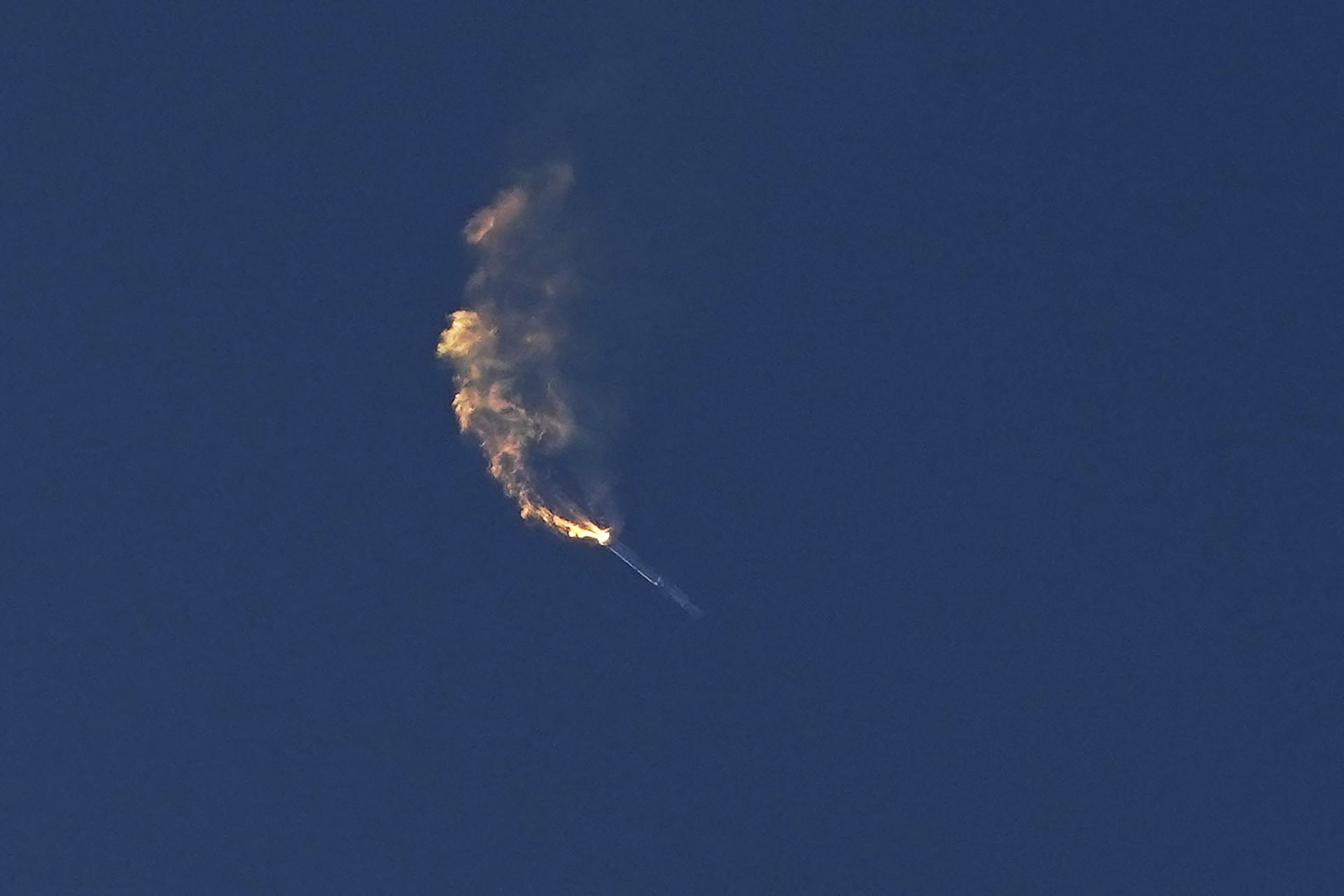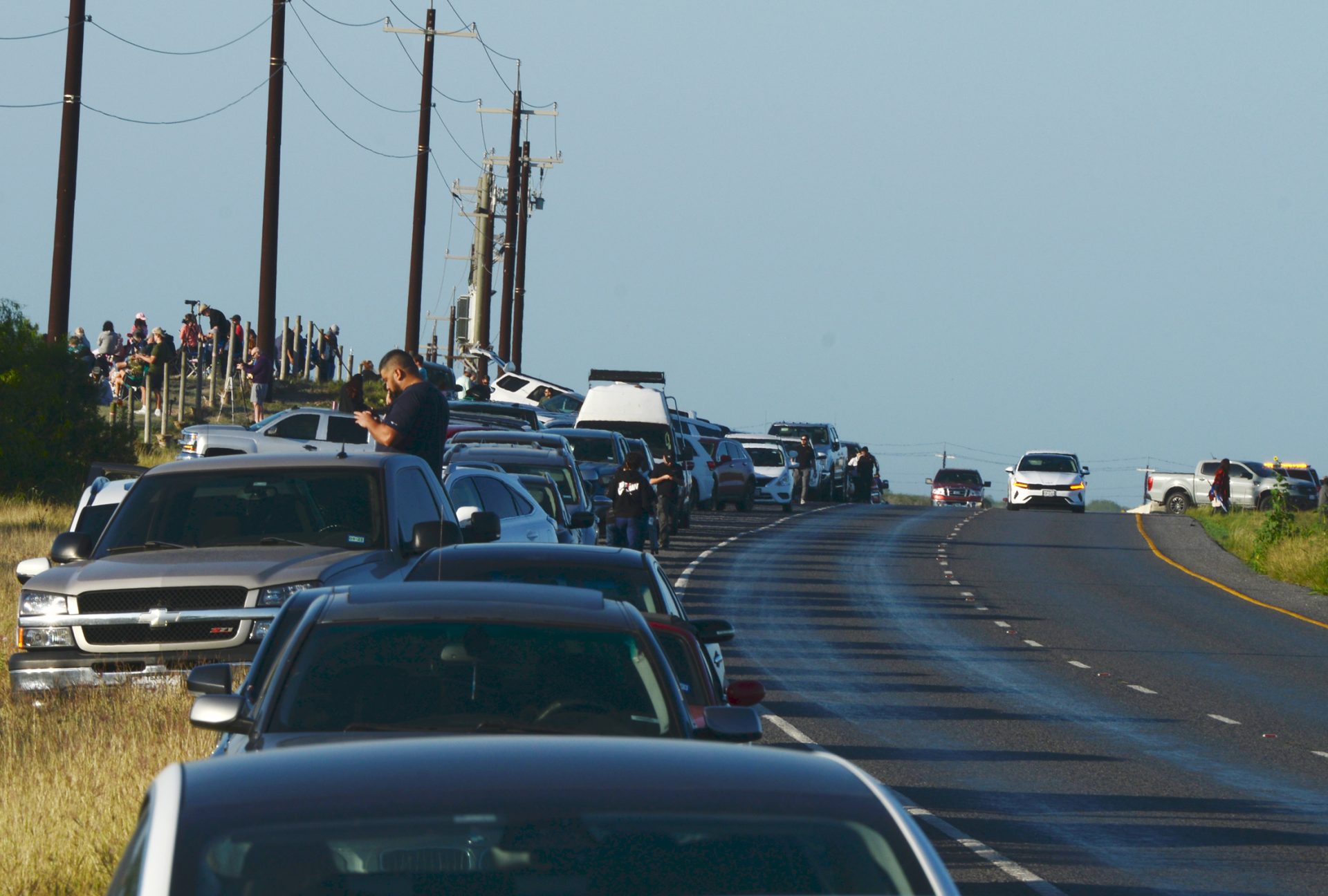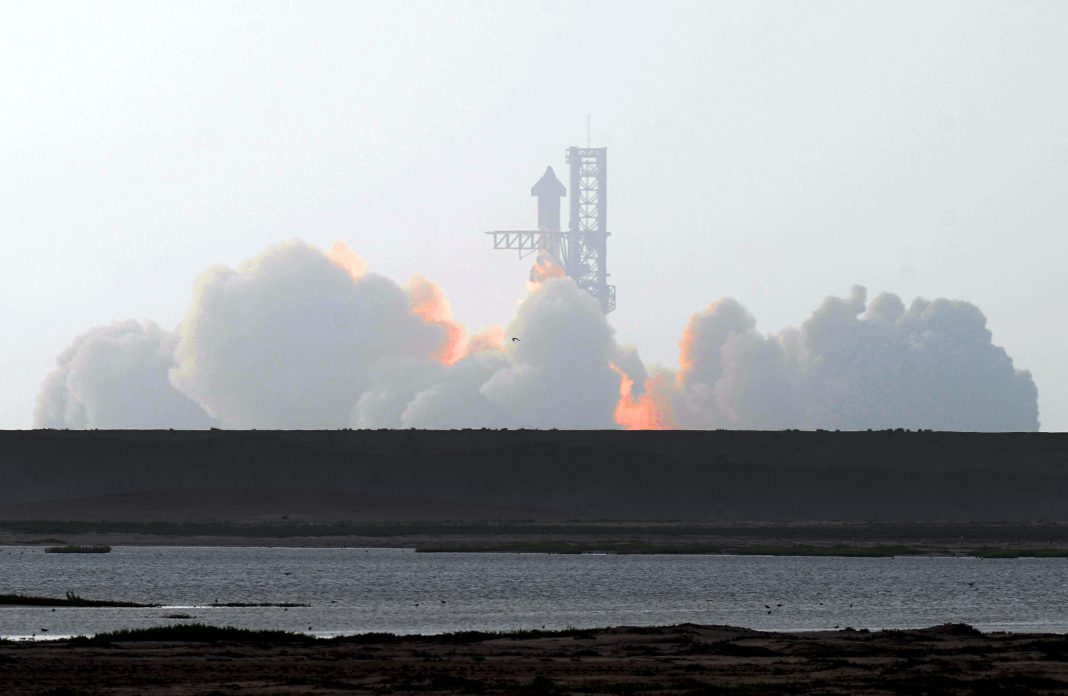|
Only have a minute? Listen instead
Getting your Trinity Audio player ready...
|
SpaceX founder and CEO Elon Musk, in an April 29 “Twitter Spaces” conversation with followers, discussed aspects of the April 20 orbital launch attempt from Boca Chica of Starship SN24/Super Heavy BN7, the largest, most powerful rocket ever to have flown.
The flight lasted 3 minutes and 59 seconds, ending in an explosion over the Gulf of Mexico courtesy of the vehicle’s Autonomous Flight Termination System (AFTS) after the rocket’s two stages failed to separate and the craft spun out of control, five of the Super Heavy booster’s 33 engines out of commission.
It should have blown up sooner, Musk said.
The roughly 40 seconds it took for the AFTS to rupture Starship’s and Super Heavy’s propellant tanks was “way too long,” he said. Musk said that because of the delay the Federal Aviation Administration will need to “requalify” the AFTS and suggested that could take a while.
The requalification likely will be the most time-consuming part of the process of getting to the next orbital launch attempt, he said. The process also will involve rebuilding the orbital launch pad, which did not withstand the force of the blast even though it was made from a special type of heat-resistant concrete.
Pieces of the shattered pad went flying hundreds of feet away in all directions — even landing in the surf some 1,500 feet away. Some chunks of the pad have already found their way onto eBay.
Musk said the liftoff generated a “rock tornado” under the rocket but that SpaceX had seen no evidence that it damaged the Super Heavy’s engines or heat shields, though it’s possible it did happen.
The rocket lifted off with just 30 of its 33 engines lit, the minimum number necessary for launch, he said. The launch team chose to shut down the three engines because they were not in optimal condition for full thrust, Musk said.
“Some kind of energy event” 27 seconds after launch caused SpaceX to lose communications with the ship, while “some kind of explosion” knocked out the heat shields on some engines, he said, noting that Starship-Super Heavy lost thrust vector control — directional control — 85 seconds into the flight.

Loss of the launch pad came as a surprise, said Musk, who offered SpaceX’s “leading theory” that the sand beneath the concrete may have become so compressed by the force of the engines that “the concrete effectively bent and then cracked.” He said damage to the pad isn’t too bad and shouldn’t take long to repair, maybe six to eight weeks.
SpaceX originally had planned to install water-cooled steel plates under the launch mount but ran into time constraints, Musk had said previously, though “we’re going to be putting down a lot of steel,” before the next attempt, he said.
Starship-Super Heavy fared better than the launch pad structurally.
“The vehicle’s structural margins appear to be better than we expected, as we can tell from the vehicle actually doing somersaults towards the end and still staying intact,” Musk said.
He expected Starship-Super Heavy to at least clear the launch pad on April 20, he said, and that the test slightly exceeded his expectations. A number of improvements have been made to Super Heavy BN9, the next booster SpaceX expects to fly, Musk said. The goal for the next orbital flight attempt will be to achieve stage separation and actually make it into orbit, he said.
“My expectation for the next flight would be to reach orbit,” Musk said.

Even if the launch pad at Boca Chica is ready to go in a couple of months, other delays could present themselves. A lawsuit, for instance, was filed in Washington D.C. federal district court on May 1 against the FAA by several groups opposed to SpaceX’s activities at Boca Chica. The suit claims that the FAA failed to “fully analyze and mitigate the environmental harms resulting from the SpaceX Starship-Super Heavy launch program at Boca Chica.”
Among the plaintiffs in the suit is the local environmental group Save RGV. Mary Angela Branch, one of the group’s board members, characterized as “an astonishingly bad decision” what she alleged was the FAA’s failure to “fully analyze the dangers of a rocket test launch and manufacturing facility” so close to the Lower Rio Grande National Wildlife Refuge, which begins about a mile south of the launch site.
“So many threatened and endangered species are counting on the agency to get this right,” Branch said.





